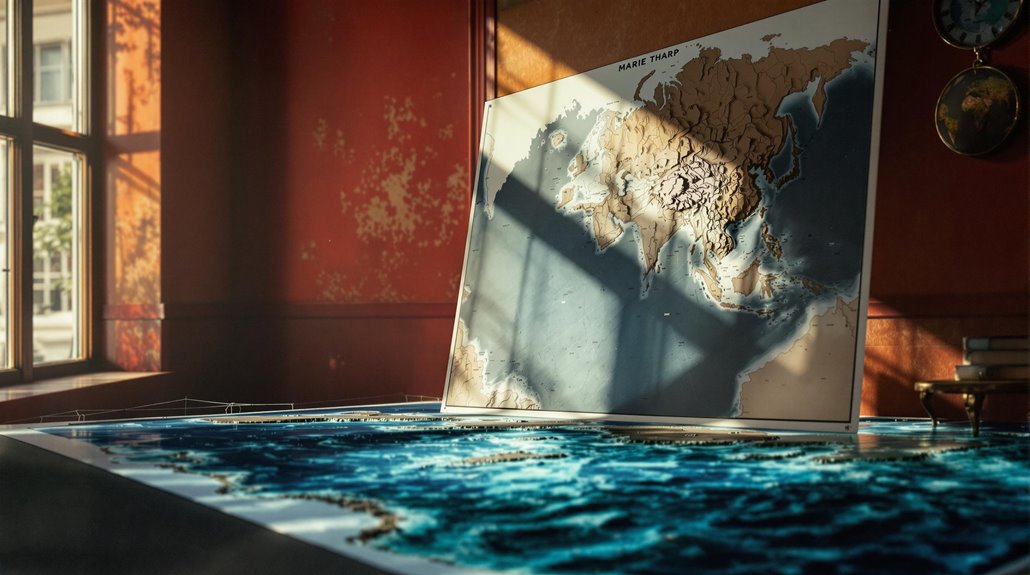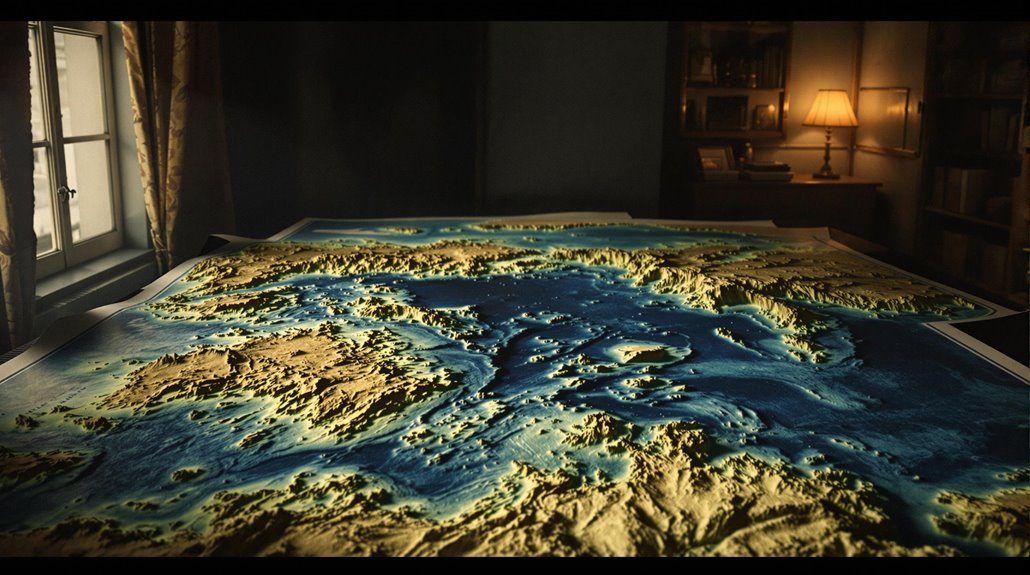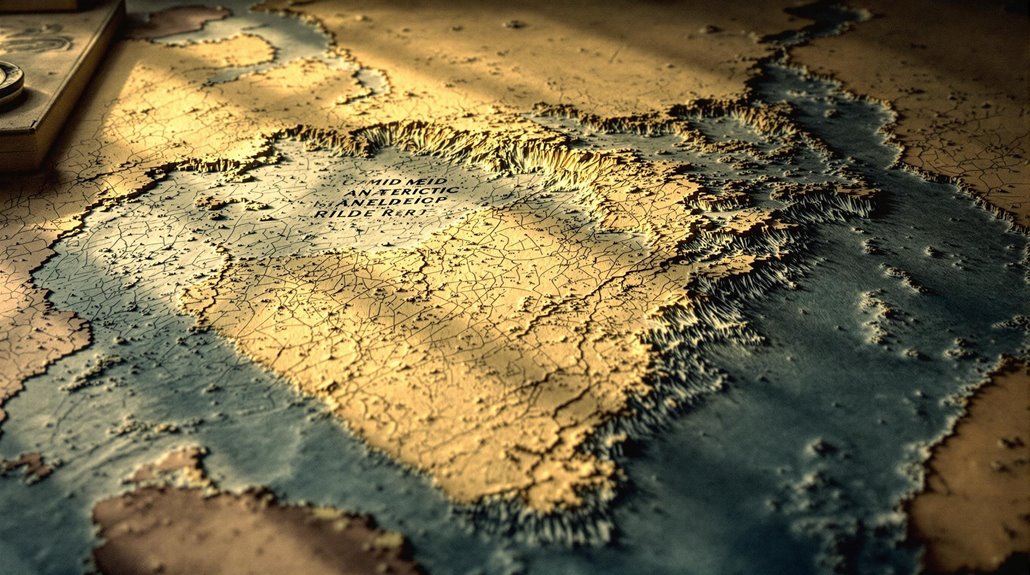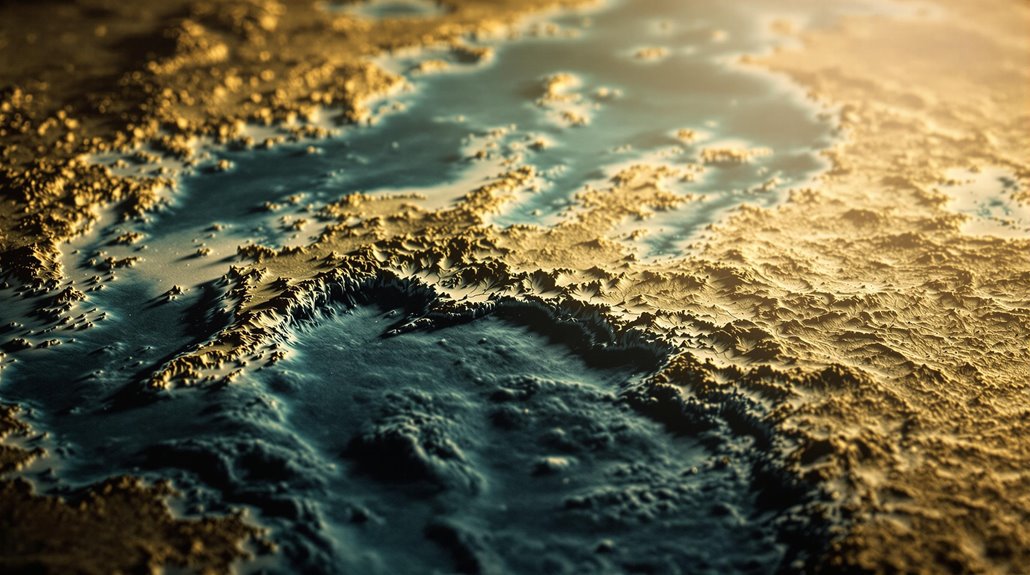Marie Tharp’s Ocean Floor Map: The Day Her Earth-Shattering Discovery Broke Science
Did you know that before 1977, scientists had mapped less than 0.05% of the ocean floor? You're about to discover how one woman's determination turned this vast underwater mystery into a groundbreaking revelation. When Marie Tharp first suggested that her maps showed evidence of continental drift, her male colleagues dismissed it as "girl talk." Yet her persistence would soon expose a 40,000-kilometer ridge system that changed our understanding of Earth forever – and it all started with a simple depth measurement.
The Uncharted Path: From Music Major to Ocean Explorer

How does a music and English major become one of the most influential ocean floor mapmakers in history? For Marie Tharp, born in 1920, the path wasn't straightforward. Moving seventeen times during her childhood due to her father's work as a soil surveyor, she developed an early adaptability that would serve her well in her career change.
Though she graduated from Ohio University in 1943 with degrees in English and music, a single geology class sparked her fascination with earth sciences.
Working at her first job at an oil company in Tulsa, she faced a limiting environment where she was confined to office work. Her time there helped her develop essential drafting skills for future geological projects.
World War II's labor demands opened doors for women in male-dominated fields, leading Tharp to pursue an interdisciplinary education that included master's degrees in both geology and mathematics.
This unique combination of skills eventually landed her at Columbia University's Lamont Geological Observatory, where she'd begin her groundbreaking work mapping the ocean floor.
Breaking Barriers in a Male-Dominated Scientific World
Despite her groundbreaking discoveries, Marie Tharp faced relentless discrimination in the male-dominated field of oceanography. You'll find her story reflects the stark gender bias of her time – she couldn't board research vessels, was forced to work from home, and even had her findings dismissed as "girl talk" by colleague Bruce Heezen.
When she first mapped the ocean floor, she wasn't listed as a co-author of her own work.
Yet Tharp's determination proved stronger than the barriers she faced. By 1959, she finally gained scientific recognition as a co-author, three years after her initial publication. Her struggle mirrors a persistent trend, as women today still hold only 39% of academic positions in science, engineering, and health fields. Her work at Columbia University's Lamont Observatory spanned over three decades, during which she revolutionized our understanding of the ocean floor.
While reactions to her groundbreaking ocean floor maps ranged from amazement to scorn, she persisted. Her legacy now inspires generations of female scientists, contributing to today's improved – though still unequal – representation of women in STEM fields.
The Revolutionary Discovery of the Mid-Atlantic Ridge
While early sailors had long suspected a massive undersea mountain chain existed in the Atlantic, the true nature of the Mid-Atlantic Ridge remained hidden until Marie Tharp's detailed mapping work.
Through careful seafloor mapping, she revealed a stunning geological marvel: a 40,000-kilometer ridge system that rises nearly 7,700 feet above the ocean floor.
The Mid-Atlantic geology she uncovered was revolutionary. You'll find a central rift valley up to 25 miles wide, with depths plunging one mile below the surrounding seafloor. The ridge's impressive width of 1,000 miles makes it one of Earth's most significant geological features. The ridge contains numerous black smokers and carbonate towers that contribute to its unique geological landscape.
This wasn't just any mountain range – it was the smoking gun that proved continental drift. Here, new oceanic crust forms as magma rises between separating tectonic plates, pushing Europe and North America apart at rates of 1-10 centimeters yearly.
Tharp's discovery fundamentally changed our understanding of Earth's dynamics.
Mapping the Impossible: Creating "The World Ocean Floor"
When Marie Tharp set out on creating "The World Ocean Floor" map, she faced the monumental task of visualizing 70% of Earth's surface that lay hidden beneath the waves.
Using sonar technology and thousands of depth measurements, she meticulously translated raw data into detailed 2D seafloor profiles. Her innovative mapping techniques included adapting Lobeck's physiographic style and using shading to express underwater topography. Her early training in drafting and mathematics proved invaluable for visualizing complex underwater terrain.
You wouldn't believe the challenges she overcame. With classified data during the Cold War and vast unexplored regions, she'd to extrapolate bathymetry based on known areas.
Yet through collaboration with painter Heinrich Berann and integration of precision depth recorder data, she produced the first complete map of ocean floors in 1977.
Her groundbreaking work revealed a 40,000-mile underwater ridge system that helped prove plate tectonics theory.
A Legacy That Transformed Our Understanding of Earth

Marie Tharp's landmark mapping achievements rippled far beyond the domain of ocean cartography.
Her revolutionary ocean mapping techniques didn't just reveal the seafloor's hidden features – they fundamentally transformed our understanding of how Earth works.
Despite facing gender discrimination that initially kept her off research vessels and saw her work dismissed as "girl talk," you'll find her influence in every modern scientific collaboration studying plate tectonics.
Working from her home office after being fired in 1964, she continued her groundbreaking mapping work with unwavering determination.
The discovery of the Mid-Atlantic Rift Valley in the 1950s marked one of her most significant contributions to marine geology.
Today, you can see Tharp's legacy honored through prestigious awards like the Hubbard Medal and the naming of the USNS Marie Tharp research vessel.
Her physiographic maps remain essential tools for scientists worldwide, while her perseverance in overcoming barriers has inspired generations of female researchers.
Perhaps most importantly, her work provided the significant evidence that helped the scientific community finally accept the theory of plate tectonics.










